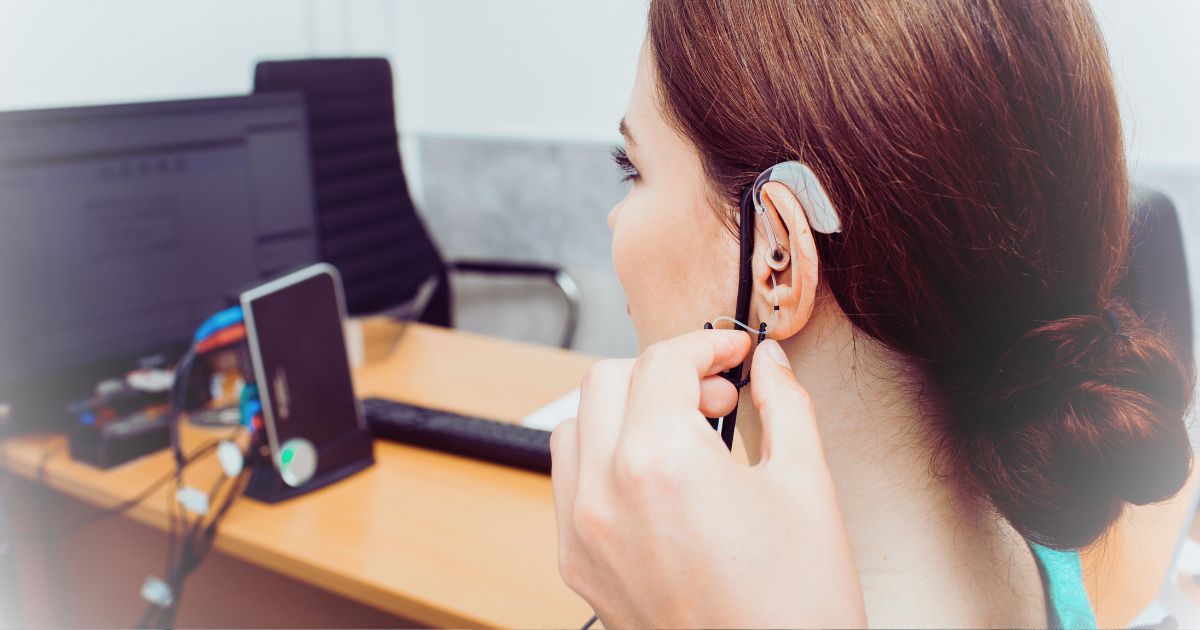There exists a significant disparity between the number of individuals in need of hearing aids and those who actually utilize them. This discrepancy may stem from instances where users have encountered dissatisfaction with their hearing aids. Several factors contribute to hearing aid satisfaction, with poor fitting sessions being a notable concern.
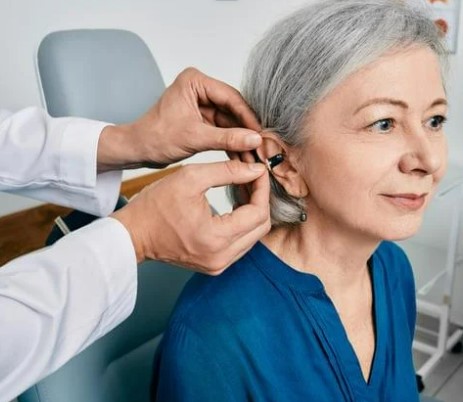 Given the uniqueness of each individual’s ears, precise measurements are crucial during the fitting process to ensure a comfortable and effective hearing device tailored to the patient’s requirements. Ear canal anatomy varies in shape, size, and acoustics, necessitating accommodation of these factors during fitting. It’s not uncommon for an individual to have differing ear canal characteristics between their ears, resulting in distinct acoustic experiences.
Given the uniqueness of each individual’s ears, precise measurements are crucial during the fitting process to ensure a comfortable and effective hearing device tailored to the patient’s requirements. Ear canal anatomy varies in shape, size, and acoustics, necessitating accommodation of these factors during fitting. It’s not uncommon for an individual to have differing ear canal characteristics between their ears, resulting in distinct acoustic experiences.
During the fitting of a hearing aid, accurate measurements specific to the individual are imperative to ensure the fidelity of the produced sound, rather than relying on standardized averages. Audiologists possess the expertise to obtain precise measurements tailored to each patient’s ears, ensuring comfort and alignment with their unique requirements.
This process includes both verification and validation. Verification involves objective measures, such as real-ear or probe-microphone assessments, to confirm the proper operation of the hearing aid. Validation, on the other hand, involves subjective assessments of the user’s perceived benefit, satisfaction, and reduction of auditory handicap resulting from using hearing aids.
- Verification and Validation of Hearing Aid Fittings
- How do Real Ear Measurements (REMs) Work?
- Why are REMs Important?
- Advantages of REMs
- Limitations of REMs
- What Constitutes Good Quality REMs
Verification and Validation of Hearing Aid Fitting
According to Abrams (2017), success in real-world settings is closely linked to how well hearing care providers follow best-practice protocols for selecting and fitting hearing aids. These protocols, as outlined in clinical practice guidelines, emphasize two crucial elements: verification and validation. Verification ensures that the device meets specific measurable specifications, while validation takes into account the patient’s perspective on treatment success.
Studies indicate that individuals who undergo hearing aid fitting utilizing real ear measurements tend to experience greater long-term success with their devices. Put simply, verification and real ear measurements are conducted to ensure that the hearing aid is functioning optimally to provide tangible benefits. It’s essential to view verification in conjunction with validation.
Presently, real-ear probe microphone measurements stand as the most efficient and accurate method for verifying that the hearing aid’s output aligns with evidence-based targets across various frequencies and input levels.
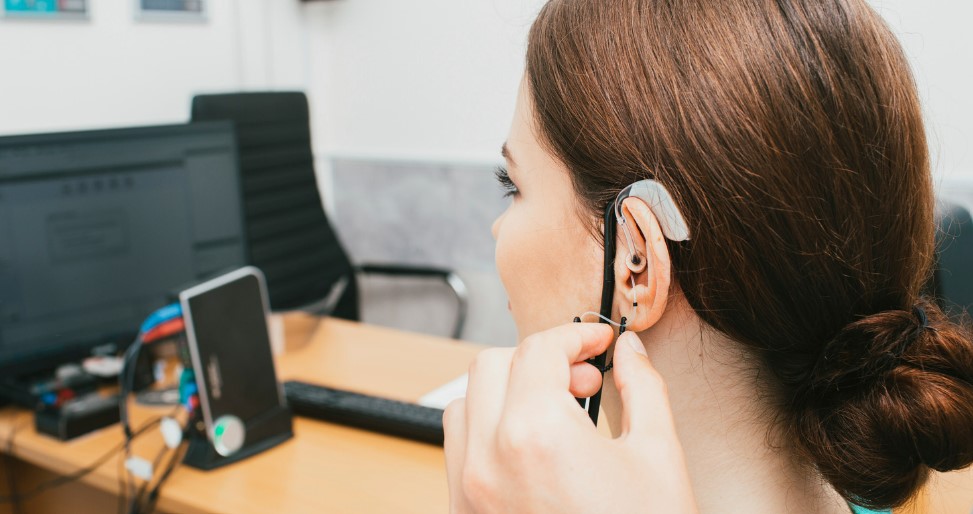
How do Real Ear Measurements (REM) work?
Real Ear Measurements (REM) are also known as Probe Microphone Measurements (PMM) and are widely regarded as the gold standard in hearing aid fitting and verification. They enable audiologists to ascertain whether a hearing aid user is receiving the precise amplification required at every frequency to optimize their hearing. REM measures the sound pressure level generated when a hearing aid is worn in the ear, ensuring that it delivers the appropriate amplification according to the individual’s hearing loss prescription.
Given the variations in ear canal anatomy and acoustic resonance, even identical hearing aids with identical settings can yield diverse performances due to these individual differences. Verification through REM is customized based on:
- The anatomical structure and unique acoustic properties of the ear canal
- The specific hearing device chosen for the patient
- The patient’s individual hearing loss profile
By considering these factors, REM assists skilled audiologists in accurately compensating for individual differences.
During REM, following the placement and configuration of the hearing devices, the audiologist inserts a small probe into the ear canal near the eardrum. This probe, equipped with a microphone, monitors the sound transmitted to the eardrum via the hearing aids. REM verifies that the hearing device delivers the recommended amplification across all frequency ranges, allowing adjustments to be made if necessary. A slim silicone probe, connected to an external microphone, is inserted into the ear canal alongside the hearing aid.
The REM system emits a test stimulus from a loudspeaker positioned approximately 30cm to 1m away, measuring the output in the ear canal to determine the amplification provided by the hearing aid at the eardrum compared to the prescribed level for the individual’s hearing loss. This ensures independent verification that the settings are accurate and that the appropriate sound level reaches the eardrums. Any disparities between the hearing aid programming and the sound reaching the eardrums can be promptly identified and corrected by the audiologist using specialized fitting software in real time.
Live speech mapping may also be utilized during this process to assess the levels and pitches of speech reaching the auditory system. The hearing aid is adjusted to amplify speech in accordance with predefined targets, enhancing audibility. The audiologist fine-tunes each frequency channel and loudness level while the client listens to a real-time spectrum representation of the speech transmitted through the ear canal.
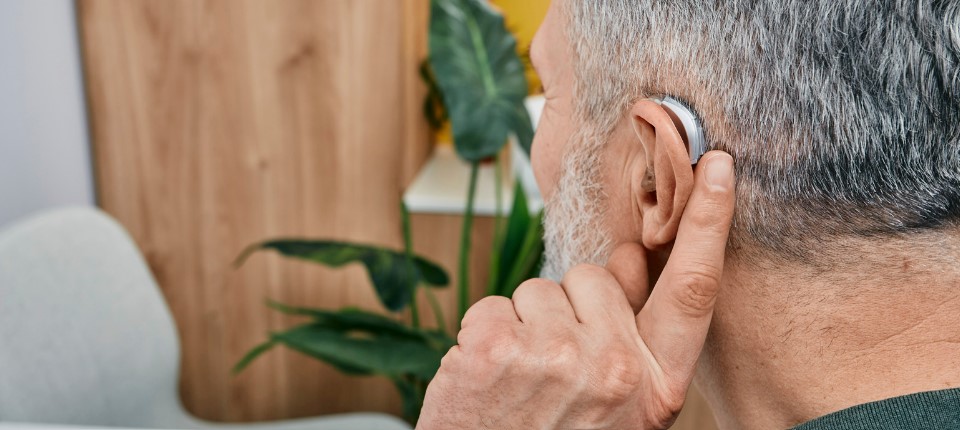
Pre-defined targets: NAL-NL2 vs. DSL
The prescription target represents the desired amplification levels needed to compensate for the individual’s hearing loss across different frequencies. The primary goal of these targets is to enhance speech recognition, ultimately improving the overall outcome for patients.
Currently, two prevalent prescriptions are utilized: the Australian National Acoustic Laboratories—Non-Linear 2 (NAL-NL2) and the University of Western Ontario implementation of the Desired Sensation Level Multiple Input/Output (DSL m[i/o]). NAL-NL2 focuses on maximizing the Speech Intelligibility Index (SII) while ensuring that the perceived loudness does not exceed that of a person with normal hearing sensitivity. Conversely, DSL m[i/o] aims to maximize the audibility of speech frequencies while considering loudness comfort.
NAL-NL2 prioritizes audibility to frequencies beneficial for speech recognition, with a careful balance to avoid amplifying frequencies irrelevant to speech understanding. In contrast, DSL m[i/o] emphasizes maximizing audible bandwidth to provide access to speech cues that could enhance speech recognition. Therefore, these prescriptions operate on different philosophies, resulting in differing desired sensation levels and loudness recommendations.
NAL-NL2 is tailored for adults fitted with hearing aids later in life, considering factors such as age, gender, hearing aid experience, language, and compressor speed. On the other hand, DSL v.5 targets are commonly used for pediatric fittings, with DSL-A targets for adults with acquired hearing loss and DSL-C targets for children with congenital hearing loss.
Types of Verification Measures
Two primary techniques of verification exist: coupler measurements and real-ear measurements (REMs). Coupler measurements ensure hearing aids function per manufacturer specifications, while REMs accurately measure gain received by the patient near the eardrum.
REMs offer spectral analysis, illustrating audibility for various speech sounds, aiding in precise adjustments.
REM Protocols
Two REM protocols are commonly used:
- Insertion Gain: Measures ear canal resonance both with and without the hearing aid in place, ensuring accurate adjustment accounting for individual ear characteristics.
- Live Speech Mapping: Utilizes speech stimulus to assess hearing aid performance in real-time, allowing adjustments with active adaptive features.
Interpretation and Adjustment
Results from REMs are displayed for the patient, facilitating adjustments to optimize hearing aid performance. Clinicians adjust settings based on patient feedback, ensuring satisfaction and compliance. Follow-up visits allow for further adjustments based on patient experience and additional speech tests.
Why are REMs Important?
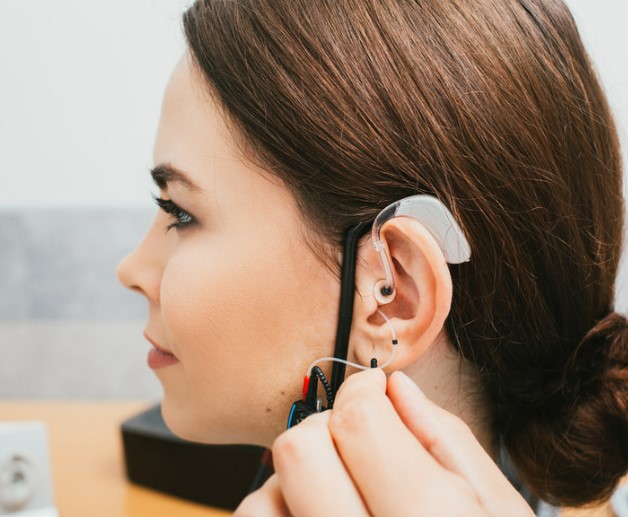 Customized Fitting and Calibration
Customized Fitting and Calibration
Real Ear Measurement (REM) ensures that hearing aids are fitted accurately and customized for each individual, maximizing the benefits of wearing them. REM allows for the calibration of hearing aids to be adjusted as needed, accommodating changes in an individual’s audiogram over time or changes in the ear canal shape.
Preservation of Residual Hearing
By precisely identifying the right sounds to amplify and limiting amplification of unwanted sounds, REM helps prevent over-amplification, preserving residual hearing and preventing potential harm.
Maintenance of Optimal Hearing
REM facilitates ongoing assessment and adjustment of hearing aids to maintain optimal hearing, particularly as ear characteristics may change over time.
Prevention of Over- and Under-Amplification
REM ensures that the hearing aid’s amplification level is neither too high nor too low, providing just the right amount of amplification for effective hearing.
Confirmation of Prescription Accuracy
Independent of manufacturers’ software, REM confirms the accuracy of the hearing aid prescription, ensuring alignment with the wearer’s needs and maximizing effectiveness. REM serves as a diagnostic tool, providing insight into the working order and power sufficiency of hearing aids, detecting malfunctions or suitability issues.
Visual Representation
REM offers a visual representation of the amplification provided by the hearing aid, aiding understanding of its performance by both audiologists and wearers.
What are the Advantages of REM?
REM provides hearing aid wearers with a more accurate and customized fitting of their devices, enhancing overall satisfaction with the fitting experience.
When performed by audiologists during the fitting process, real ear measurements are considered the most reliable method for assessing the benefit delivered by hearing aids. This improvement is attributed to enhanced audibility and increased contentment with the fitting process.
Why is REM Testing Vital to a Good Hearing Aid Fitting?
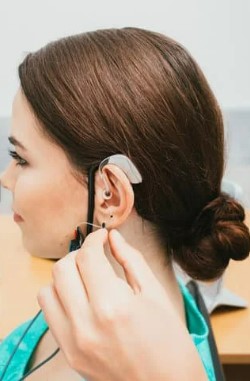 Both the American Speech-Language-Hearing Association (ASHA) and the American Academy of Audiology (AAA) advocate for the use of real ear measurements to evaluate hearing aid effectiveness whenever possible.
Both the American Speech-Language-Hearing Association (ASHA) and the American Academy of Audiology (AAA) advocate for the use of real ear measurements to evaluate hearing aid effectiveness whenever possible.
Hearing aid fitting software often relies on generalized assumptions rather than actual measurements, leading to discrepancies between predicted and actual gain settings in the ear canal. REM addresses this issue by providing precise measurements tailored to the individual’s needs.
Where does Validation fit in?
Validation occurs after verification and typically involves functional assessments such as aided hearing tests, which require cooperation from the patient and acclimatization to wearing the hearing aids.
While validation is essential, it may not provide insights into the quality of fitting on each side independently.
Reasons Why REMs are Worth Performing:
Reduces Return Visits
Utilizing REM results in a 76% success rate for patients after just one or two visits, significantly reducing the need for return visits. In contrast, without REM, nearly half (47%) of patients experience below-average success and require four to six visits for readjustments.
Reduces Hearing Aid Returns
Research indicates that customers exhibit higher satisfaction levels with hearing aids fitted using REM. This heightened satisfaction leads to fewer returns, enhancing clinic efficiency, profitability, and overall outcomes.
Increases Customer Satisfaction
Multiple studies demonstrate that REM testing enhances the benefits of hearing aids, resulting in improved hearing experiences for wearers. These positive outcomes contribute to heightened customer satisfaction and loyalty.
Increases Customer Referrals
Satisfied customers are more inclined to recommend the clinic to friends and family, generating high-quality leads with a strong likelihood of conversion.
Saves Time And Money
Despite the initial investment in REM equipment, the returns are substantial. By accurately measuring customers’ hearing with hearing aids, REM eliminates guesswork from the fitting process, resulting in fewer adjustments and ensuring the right fit from the outset. This efficiency saves both time and resources in the long run.
Limitations of REMs: Why Are They Still Under Utilized?
Cost and Accessibility: REM equipment can be expensive, making it less accessible, particularly in smaller audiology practices or in regions with limited resources.
Time-Consuming: Conducting REMs requires additional time during the fitting process, as adjustments may need to be made iteratively to achieve optimal amplification.
Probe Tube Placement Errors: REM measurements are sensitive to the accurate placement of the probe tube in the ear canal. Small variations in placement can lead to significant measurement errors, particularly in higher frequencies.
Patient Compliance: Some patients may find the REM procedure uncomfortable or inconvenient, which could affect their willingness to undergo repeated measurements or follow-up visits.
Ear Canal Abnormalities: Certain ear canal abnormalities, such as excessive earwax, discharge, or significant pain, can interfere with the accuracy of REMs or even contraindicate the procedure altogether.
Skill Dependency: Obtaining accurate REM measurements requires skill and expertise on the part of the audiologist. Inexperienced practitioners may struggle to perform REMs accurately, leading to less reliable results.
Single-Sided Measurements: REMs typically provide information about amplification in one ear at a time. This may not fully capture the binaural listening experience or account for differences in hearing between ears.
Impact of OTC Hearing Aids on REMs:
Professional discussions increasingly revolve around Over-The-Counter (OTC) hearing aids, prompting a renewed focus on best practices for clinician-based services, including routine in-ear hearing aid verification. Some advocate for optimized outcomes to distinguish clinician-based services from direct-to-consumer models.
Interestingly, even sessions on direct-to-consumer products involve professionals using verification equipment to assess new devices like OTC hearing aids and hearables. Hearing aid analysis serves as a critical tool to understand the potential and limitations of these evolving products.
Effective utilization of in-clinic equipment enables better advice provision to patients, as there’s no substitute for high-quality analysis of hearing aid output and signal processing.
What Constitutes Good-Quality Verification?
Modern hearing aid analyzers employ standardized speech signals and analysis strategies, ensuring consistent and clinically equivalent results across different brands of analyzers. Speech analysis forms the foundation for reliable speech measurement in audiology contexts. Advances like the International Speech Test Signal (ISTS) and monolingual passages facilitate equivalent speech analysis, bridging verification and validation.
Contemporary verification systems offer calibrated speech, consistent displays mapping speech audibility, and advanced tests of signal processing, representing significant progress over past decades. Normative data for fits to targets and aided Speech Intelligibility Index (SII) enable clinicians to assess fitting quality and predict hearing aid outcomes.
Final thoughts
Studies like MarkeTrak emphasize the impact of hearing healthcare professionals on user success, with factors such as physical fit, number of visits, and the use of real-ear measurements playing pivotal roles.
Despite the limitations, verification and validation measures remain a valuable tool for optimizing hearing aid fittings and improving patient outcomes when used judiciously and in conjunction with other fitting procedures.
References:
- Almufarrij, I., Dillon, H., & Munro, K. J. (2021). Does probe-tube verification of real-ear hearing aid amplification characteristics improve outcomes in adults? A systematic review and meta-analysis. Trends in Hearing, 25, 2331216521999563.
- Are Real Ear Measurements Necessary? (n.d.). Auditdata. Retrieved from https://www.auditdata.com/insights/blog/are-real-ear-measurements-necessary/
- Abrams, H. (2017). Hearing aid verification and validation: How they differ and why both are best practices. Hearing Health & Technology Matters. Retrieved from https://hearinghealthmatters.org/hearing-views/2017/verification-and-validation-how-they-differ-and-why-its-best-practice-to-do-both/
- Ask the Experts: What is the Difference Between Hearing Aid Verification and Validation? (n.d.). Audiology Online. Retrieved from https://www.audiologyonline.com/ask-the-experts/what-difference-between-hearing-aid-19701
- Bentler, R., Mueller, H. G., & Ricketts, T. A. (2016). Modern hearing aids: Verification, outcome measures, and follow-up. Plural Publishing.
- hnson, E. E. (2013). Modern Prescription Theory and Application: Realistic Expectations for Speech Recognition with Hearing Aids. Trends in Amplification, 17(3), 143–170. https://doi.org/10.1177/1084713813506301
- Jorgensen, L. E., & Novak, M. (2022). Verification and Validation: Just the Standards. Seminars in Hearing, 43(2), 85–93. https://doi.org/10.1055/s-0042-1749208
- Kochkin, S. (2011). MarkeTrak VIII: Reducing patient visits through verification and validation. Hearing Review, 18(6), 10-12.
- Mueller, H. G., Coverstone, J., Galster, J., Jorgensen, L., & Picou, E. (2021). 20Q: The new hearing aid fitting standard-A roundtable discussion. AudiologyOnline, Article, 27938.
- Scollie, S., & Seewald, R. (2017). 20Q: Next-Level Hearing Aid Fitting Measures – What Are They and Why Use Them? AudiologyOnline. Retrieved from https://www.audiologyonline.com/articles/20q-next-level-hearing-aid-28775
About the Author
 Nausheen Dawood is an experienced Audiologist and Project Manager with a professional background including primary health care, corporate social investment, and business development. Proficient in the development of academic courses, training, and lecturing, with a focus on clinical student training and supervision. Adept in freelance copywriting, particularly in audiology and health-related topics. Holds a Masters degree in Audiology (Cum Laude), with a strong foundation in clinical research, project development, and strategic planning, complemented by technical training. Specializes in content development and training tailored to diverse audiences. Demonstrates a long-term commitment to research and development, including the implementation of randomized controlled trials, projects, and clinical examinations. Known for establishing robust networks and cultivating valuable stakeholder relationships.
Nausheen Dawood is an experienced Audiologist and Project Manager with a professional background including primary health care, corporate social investment, and business development. Proficient in the development of academic courses, training, and lecturing, with a focus on clinical student training and supervision. Adept in freelance copywriting, particularly in audiology and health-related topics. Holds a Masters degree in Audiology (Cum Laude), with a strong foundation in clinical research, project development, and strategic planning, complemented by technical training. Specializes in content development and training tailored to diverse audiences. Demonstrates a long-term commitment to research and development, including the implementation of randomized controlled trials, projects, and clinical examinations. Known for establishing robust networks and cultivating valuable stakeholder relationships.



